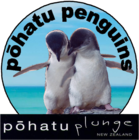Blog
5 places to see penguins in New Zealand
The first thing is: DO NOT APPROACH PENGUINS ON YOUR OWN.
If you think something is wrong call the Department of Conservation on their hotline: 0800 DOC HOT (0800 362 468).
Remember that like us, animals and penguins need time to rest so you must move out of their way, keeping at least 20 meters between you and them at all times.
And feel free to stop any other visitors who are compromising their well-being, but only if you can do it without disturbing the birds further or making matters worse.
……..................................................................................................................................................................
With increasing numbers of tourists coming to New Zealand, we have to be mindful of the impact on our native wildlife.
There is an alarming decline in penguin numbers in New Zealand. Research is showing that one of the biggest problems facing our penguins is people’s desire to see them. Penguins (like any other animal) should not be approached and a minimum distance of at least 20 meters should be kept at all times.
Please respect our unique wildlife so that they may continue to exist for generations to come!
Many of us are trying very hard to save penguins and are mortified by what some people will do for the sole purpose of getting a selfish photo.
The best option to see these beautiful creatures is to always to book a guided tour.
Here is our selection of the 5 places that you should not miss if like us you care for the penguins.
Pōhatu Penguin Colony (Of course!)Pōhatu is at the end of a 4WD steep, rugged road. A fleet of 4WD mini vans will take you from Akaroa to Pohatu to see the largest colony of Little penguins on mainland New Zealand. You will learn about the extensive conservation program that started with the landowners, and is now carried out by the entire Pōhatu Penguin team. The best tour to see penguins and learn about our conservation is the Evening Penguin Tour. Here you will be able to watch penguins rafting and interacting on the water before slowly making their way ashore. Join our monitoring team as we walk around the colony to check on our Little Penguins, and observe our rehabilitation efforts up-close and personal (rehabilitation tends to occur mid November – January). PLEASE NOTE:
Oamaru - Blue Penguin colony.In Oamaru you will have the opportunity of seeing a “Penguin parade”. You will see many birds coming ashore at one time. It is not a walking tour, rather, you can comfortably sit in their grandstand as you and others observe the penguins under dimmed lights. Purchasing a tour with Oamaru helps fund some wonderful Little Penguin research! Otago peninsula.Otago Peninsula is a popular place for both Little Blue Penguins and especially the Yellow-Eyed Penguin. There are several operators that offer fantastic tours: 1) The OPERA (Otago Peninsula Eco Restoration Alliance Limited) previously known as Penguin Place: Has both the Yellow Eyed and Little Blue penguins. Good set up, includes rehabilitation. 2) Elm Wildlife Tours: Run a great tour to Papanui Beach where Yellow Eyed penguins and the Hookers sea lion can be seen. 3) Pilots Beach: Little Penguin attraction. Moeraki.At Moeraki there is a very high diversity of wildlife and sea-birds, but it is unfortunately a typical example of uncontrolled tourism. This is having a devastating impact on the population of yellow eyed penguins. Milford or Doubtful sounds.The Fiordland Crested Penguins are very elusive and considered one of the most endangered penguins in the world. However, because they live in some extreme habitats it’s difficult to accurately gauge their endangerment. The best way to responsibly view these penguins is via the sound cruises. It is rare to spot them, but a real treat when you do! |
  -139.jpg) |

